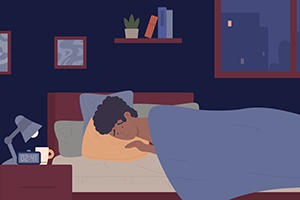
The lifetime prevalence of obsessive-compulsive disorder (OCD) amongst adults in the United States is 2-3%. While most providers can list the most common symptoms of OCD, the diagnosis is rare enough that it may have been a while since you got an update on useful screening tools and treatment recommendations. The Yale-Brown Obsessive Compulsive Scale (Y-BOCS) is a good place to start, and you can find this document on the Resources section of our website. The Y-BOCS contains a list of symptoms that can be helpful for making the diagnosis, as well as a rating scale that can be used to track treatment efficacy.
There are a wide range of obsessions and compulsions that can be seen in OCD and thus the symptom checklist on the third page of the Y-BOCS document can be very helpful when trying to establish the diagnosis. Moreover, the rating scale on the first two pages not only helps with establishing the diagnosis but is also useful for tracking the improvement seen with treatment.
The first-line treatment for adults with OCD is cognitive behavioral therapy (CBT) with exposure and response prevention. When medication is added to CBT, the usual first choice is an SSRI. Though an 8-week trial of an SSRI is adequate for some behavioral health diagnoses, patients with OCD may see better results from SSRIs at 16 weeks. Moreover, some patients with OCD require SSRI dosing that is titrated up toward the higher end of the usual dosage spectrum. This might mean, for example, a final daily sertraline dose of 150-200mg, rather than 50-100mg, if the patient can tolerate the higher dose.
For patients who have not responded to one or two different SSRI trials, clomipramine is sometimes trialed. SSRIs and clomipramine are not used together since the combination increases the risk of serotonin syndrome. In terms of efficacy, some clomipramine studies suggest this medication is superior to SSRIs in OCD. However, clomipramine is a tricyclic antidepressant and thus has more side effects than SSRIs, with anticholinergic side effects especially intolerable for some patients. Tricyclics also have a higher risk of cardiac side effects, even at normal doses, and are more lethal on overdose than SSRIs.
Atypical antipsychotics have some data as an augmentation strategy for patients who have a partial response to SSRIs or clomipramine. Lamotrigine and topiramate have a small amount of data for augmentation in refractory cases, as well. Clonazepam and lorazepam, on the other hand, do not generally demonstrate efficacy in studies of augmentation or monotherapy for OCD.
If you are considering using a medication for OCD, please first review your own reference material for full details on indications, side effects, dosing, monitoring requirements, and drug interactions. For reference, we most often use Micromedex, UpToDate, or Epocrates. Additionally, there are free databases available to Washington providers at heal-wa.org/professions.
If you would like more information on the spectrum of medications for OCD, please call the Psychiatry Consultation Line (877-WA-PSYCH / 877-927-7924) and one of our psychiatrists would be happy to review the data with you.
Author
Ryan Kimmel, MD
Professor, University of Washington School of Medicine, Department of Psychiatry and Behavioral Sciences
Chief of Psychiatry, University of Washington Medical Center
Medical Director, Psychiatry Consultation Line
Learn More
OCD: Diagnosis and Treatment
UW Psychiatry and Addictions Case Conference series (UW PACC)*
Presenter: Deborah Cowley, MD
The objectives of this presentation are to: 1) review the diagnosis of OCD and related disorders; 2) discuss the epidemiology, differential diagnosis, and comorbidity; and 3) discuss treatment of OCD and related disorders.
*The UW Psychiatry and Addictions Case Conference series (UW PACC) is a free, weekly teleconference that connects community providers with UW Medicine psychiatrists and addictions experts. Sessions include both an educational presentation on an addictions or psychiatry topic and case presentations where providers who participate receive feedback and recommendations for their patients.
